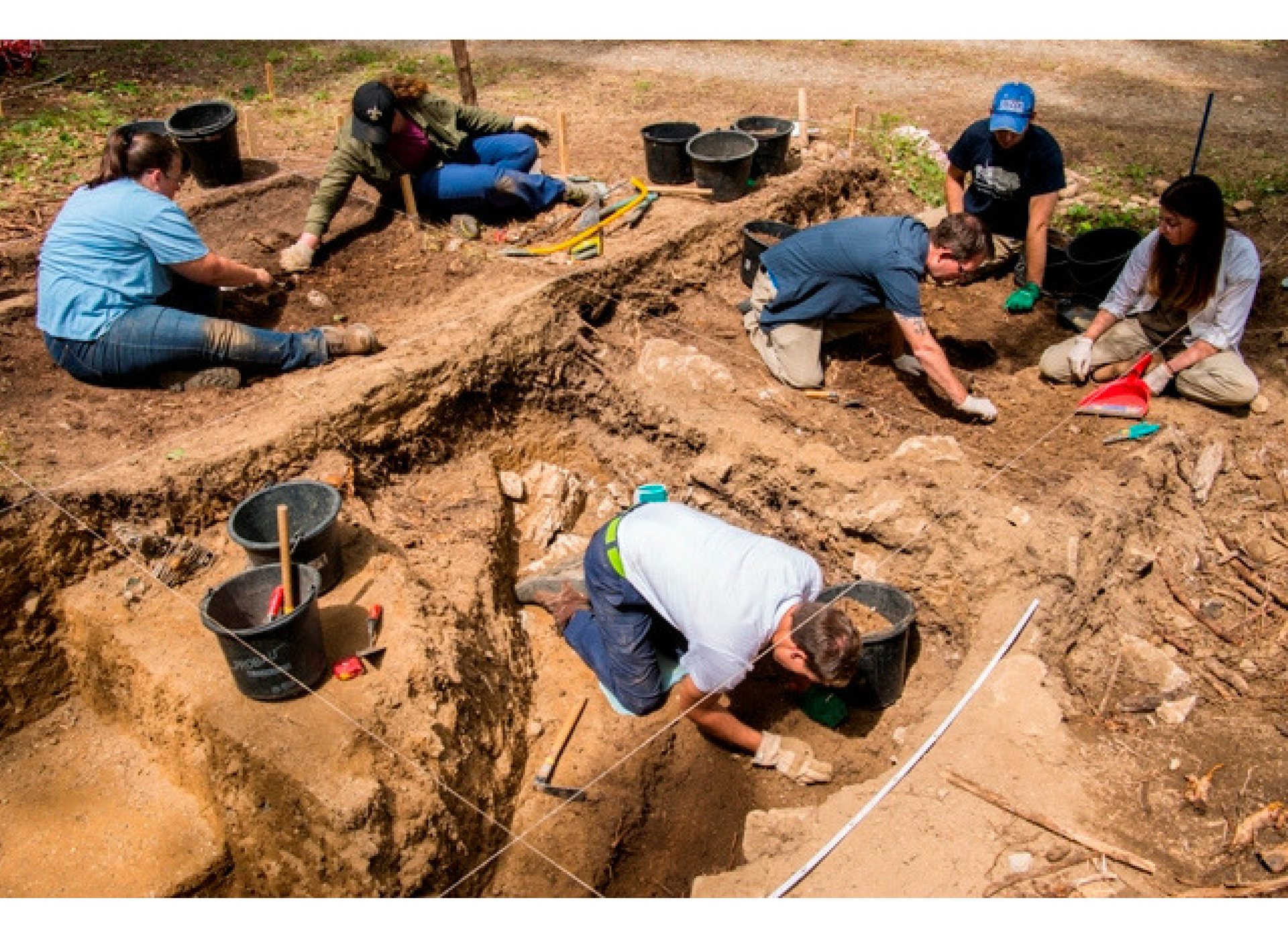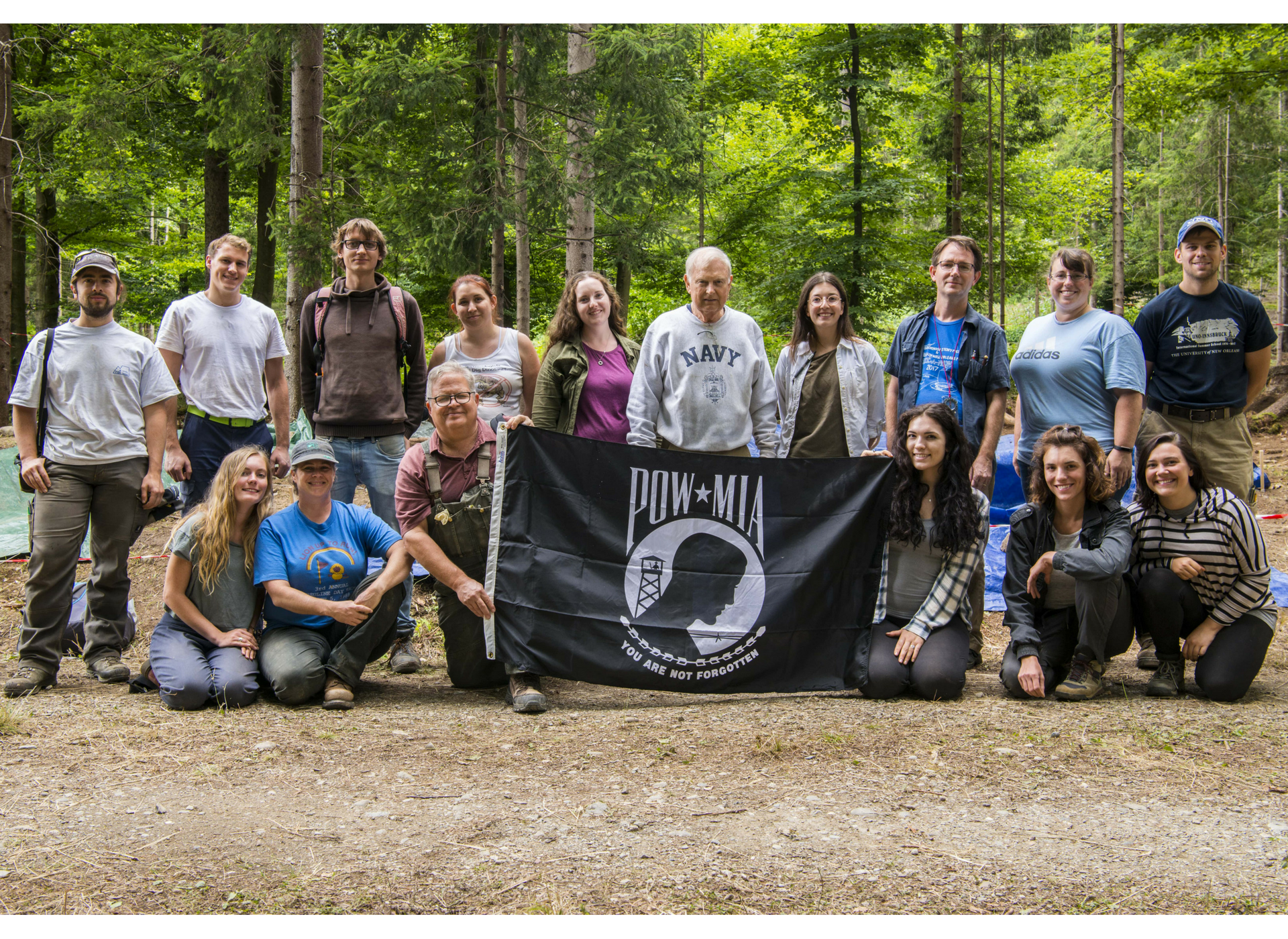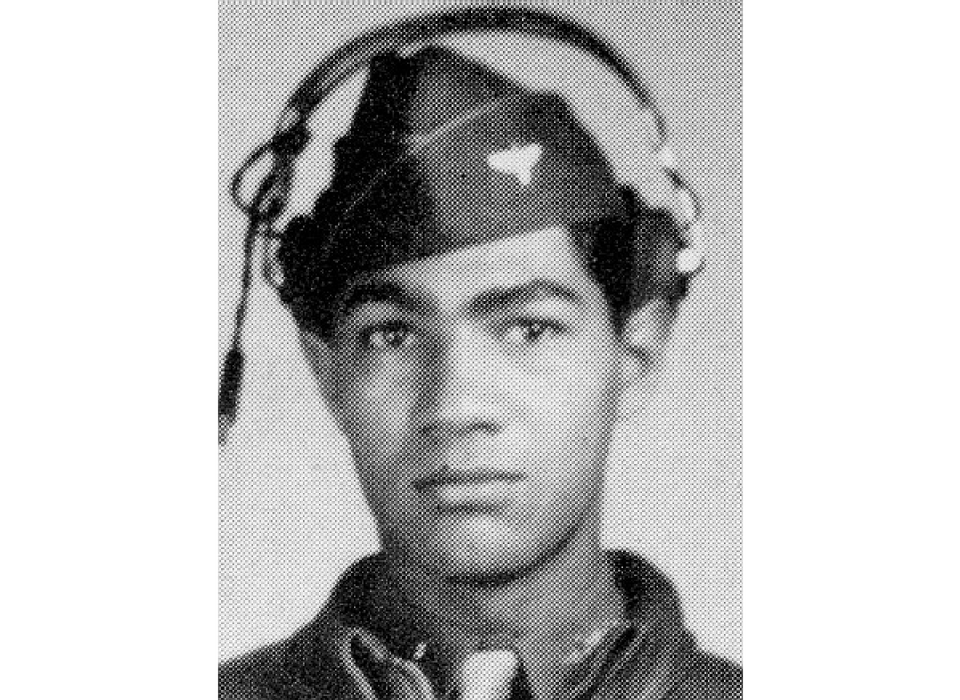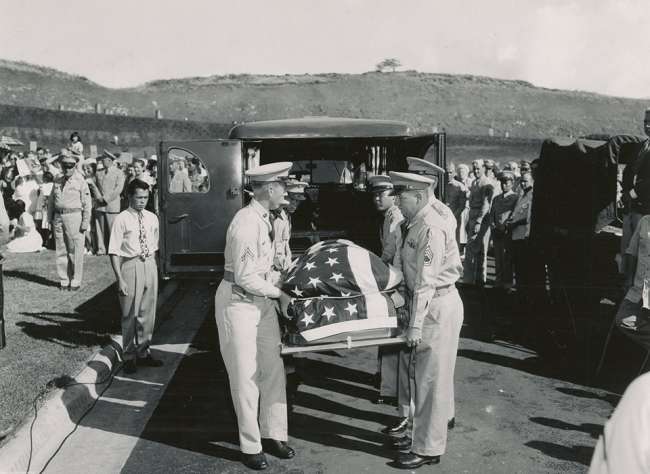News came from the Defense POW/MIA Accounting Agency (DPAA) to Marla Andrews, the next of kin, on Friday, July 27, 2018. After an unbearably long wait, it was finally confirmed. The remains of her father, Captain Lawrence E. Dickson (1920-1944), one of 27 Tuskegee Airmen previously unaccounted for from the Second World War, had been identified.
The National WWII Museum is proud to have been a partner with DPAA, the University of New Orleans, and the University of Innsbruck in resolving the case of Captain Dickson. Time is a ruthless foe for families with missing loved ones. Partnerships and cooperation across oceans and continents, however, are bringing results for many of these families whose hopes languished for decades.
The story of Lawrence Dickson, a member of the Army Air Force 100th Fighter Squadron, 332nd Fighter Group, is full of heartbreak. On December 23, 1944, he and two others, all flying P-51D Mustangs with the distinctive red tails, escorted a P-38 Lightning on a reconnaissance mission to Prague. It was Dickson’s 68th mission with his P-51, nicknamed “Peggin’.” During the journey back to base at Ramitelli, Italy, his fighter experienced severe engine trouble. One of his wingmen, 2nd Lt. Robert L. Martin, last saw the canopy of Dickson’s aircraft jettison and the plane invert over northeastern Italy, near its border with Austria. Yet Martin never saw a parachute. The Mustang descended toward the snow-covered forests of the Alps below and vanished.
After the American Graves Registration Service did not succeed in finding his remains, Dickson was classified as “non-recoverable” in 1949. His widow, Phyllis, and daughter, Marla, only two when her father died, did not relinquish hope that, one day, he would have a proper resting place. They simply refused to give up. A turn in the case came when historian Joshua Frank, working for the Joint POW/MIA Accounting Command (JPAC), DPAA’s predecessor, created a database of lost military aircraft in Italy from World War II. From his examination of Dickson’s file, Frank thought the area around the small south Austrian town of Hohenthurn, right on the Italian border, was the most promising possibility for a crash site. Roland Domanig, a local investigator hired by JPAC, traveled to Hohenthurn in April 2012. There, he met Hermann Kandutsch, whose mother witnessed the crash of a P-51. Having, as a child, played around the wreckage of the fighter, Kandutsch knew just where to take Domanig. Good fortune reinforced exacting research.
Once a location was determined, the hard work of organizing an excavation followed. With the founding of DPAA in early 2015, the successor to JPAC, the question arose about forming partnerships to deal with the almost 73,000 unrecovered service members from the Second World War. In the fall of 2016, DPAA’s Office of Strategic Partnerships inquired about collaborating with The National World War II Museum and the University of New Orleans. The Museum, with its expert staff and its extensive archival holdings and oral-history collection, made a natural partner. UNO was also a natural partner, with its International Summer Study program at the University of Innsbruck in Austria and excellent archaeological field schools. Moreover, the Museum and UNO have long, deep ties. The Museum’s founding president & CEO, Gordon H. "Nick" Mueller, was professor of history, dean, and vice chancellor at UNO.
After settling arrangements with DPAA, Dr. D. Ryan Gray, an assistant professor in UNO’s Department of Anthropology and an expert in urban archaeology, led a field team to the Hohenthurn area in mid-July 2017. Staying in nearby Villach, Dr. Gray brought a dozen UNO students with him, including two current Museum employees: Claire DeLucca, Research Assistant in President & CEO Stephen Watson’s office, and Brittany Waggener, a Travel Assistant in the Museum’s Department of Travel & Sales. Irene Ziegler from the UNO International Summer School set up flights, lodgings, and meals for the group. Complementing the team were two students working with Dr. Harald Stadler from the Institute of Archaeology at the University of Innsbruck. Dr. Stadler would also help with all of the logistics (getting permission from the property owner, securing equipment) needed to ensure a smooth operation.

Dr. Gray’s Team at Work at the Crash Site. Image: Roy Woo/DPAA.
The team spent over three weeks in the region. Working seven hours a day, five days a week, they sifted through mounds of dirt for wreckage, ammunition, personal items, and bone fragments. They received a great deal of support from people in and around Hohenthurn. Hermann Kandutsch visited the site virtually every day. To stave off any hint of hunger, he and his wife, Elisabeth, provided coffee, cakes, and regional specialties to the students. Julia Kikel, the equivalent of an American high-school junior, supplied more coffee and cookies. Adding to all of this good will was Reinhard Samitz, a local historian, who shared his expertise about the area. Hohenthurn Mayor Florian Tschirnle donated a book about the history of the town to the group and eagerly supported their work.
Tom Czekanski, Senior Curator and Restoration Manager at the Museum, joined the team for five days. An employee since 2000, Tom has assembled many of the most famous American aircraft from World War II for the Museum’s displays. In addition to the P-40 Warhawk, the B-17 Flying Fortress, and the B-25 Mitchell, he knows the P-51 Mustang quite well.
Once he arrived outside of Hohenthurn, Tom’s expertise paid dividends right away. He went to work identifying pieces unearthed by Dr. Gray’s team. Only 10-15% of the aircraft appeared to be there, most of it probably hauled away by German troops in the immediate aftermath of the crash. Still, there was plenty to inspect. An engine valve, bent in all directions, was found. Fragments from the P-51’s radio were soon discovered. Tom, who lauds the team for the appreciation of the gravity of their work, realized they must be close to the cockpit. And they were. The team uncovered in the cockpit precious personal items from Dickson. Around the site, the students collected, with the utmost care and respect, the remains of the pilot himself. After 72 years, the search for Captain Dickson was over. For all the participants, the excavation was a life-changing event.
Before they departed in early August, the team experienced a special send-off. The Permes family, who owned the bus company and employed the drivers making access to the dig far easier, threw them a barbecue in Hohenthurn replete with sausage, pork chops, and burgers. Lasting friendships formed. For the partners--DPAA, the Museum, UNO, and the University of Innsbruck, the incredible success of the venture points forward to future endeavors. Dr. Gray, for one, plans to be back in Central Europe in summer 2019.

Standing rear, l to r: Florian Messner, Daniel Jones, Philip Hermeter, Victoria Nätell, Claire DeLucca, Ralston Cole, Lyndsey Nuebel, Dr. D. Ryan Gray, Brittany Waggener, and Titus Firmin. Kneeling front, l to r: Alahna Moore, Helen Bouzon, Tom Czekanski, Whitney Mahl, Elena Ricci, and Drew Kinchen. Image:Roy Woo/DPAA .
In these joint tasks, time, too, will be an absolutely essential factor. Phyllis Finney, Dickson’s widow, did learn that a search for her late husband’s remains had been undertaken. She passed away at the age of 96 in December 2017, before getting final confirmation. Stunningly, Dickson’s wingman, 2nd Lt. Martin, died the Thursday before DPAA announced the news. He was 99. Their deaths underscore the profound importance of the work being done by the partnership-- people do not live and cannot wait forever.
Marla Andrews, 76 years young, though, is seeing her father’s remains brought home. Her request is that his remains be buried in Arlington National Cemetery. She will certainly inspire countless others who hold out for the same exultant news she received.
My colleague, Clarise Soper, a board-certified genealogist here at the Museum, and I look forward to doing whatever we can to help. Perseverance, mixed with good fortune, can change lives, burdened with so much grief, for the better.
To learn more about your veteran's story, download our free research guide and check the Institute for the Study of War and Democracy's new WWII Research Services.
Jason Dawsey, PhD
Jason Dawsey, PhD, is ASU WWII Studies Consultant in the Jenny Craig Institute for the Study of War and Democracy.
Cite this article:
MLA Citation:
APA Citation:
Chicago Style Citation:







![Max Fuchs, New York City cantor, sings as Rabbi Sydney [sic] Lefkowitz, Richmond, VA, conducts the first Jewish services from Germany.](/sites/default/files/styles/max_650x650/public/2025-10/image1.jpg)

